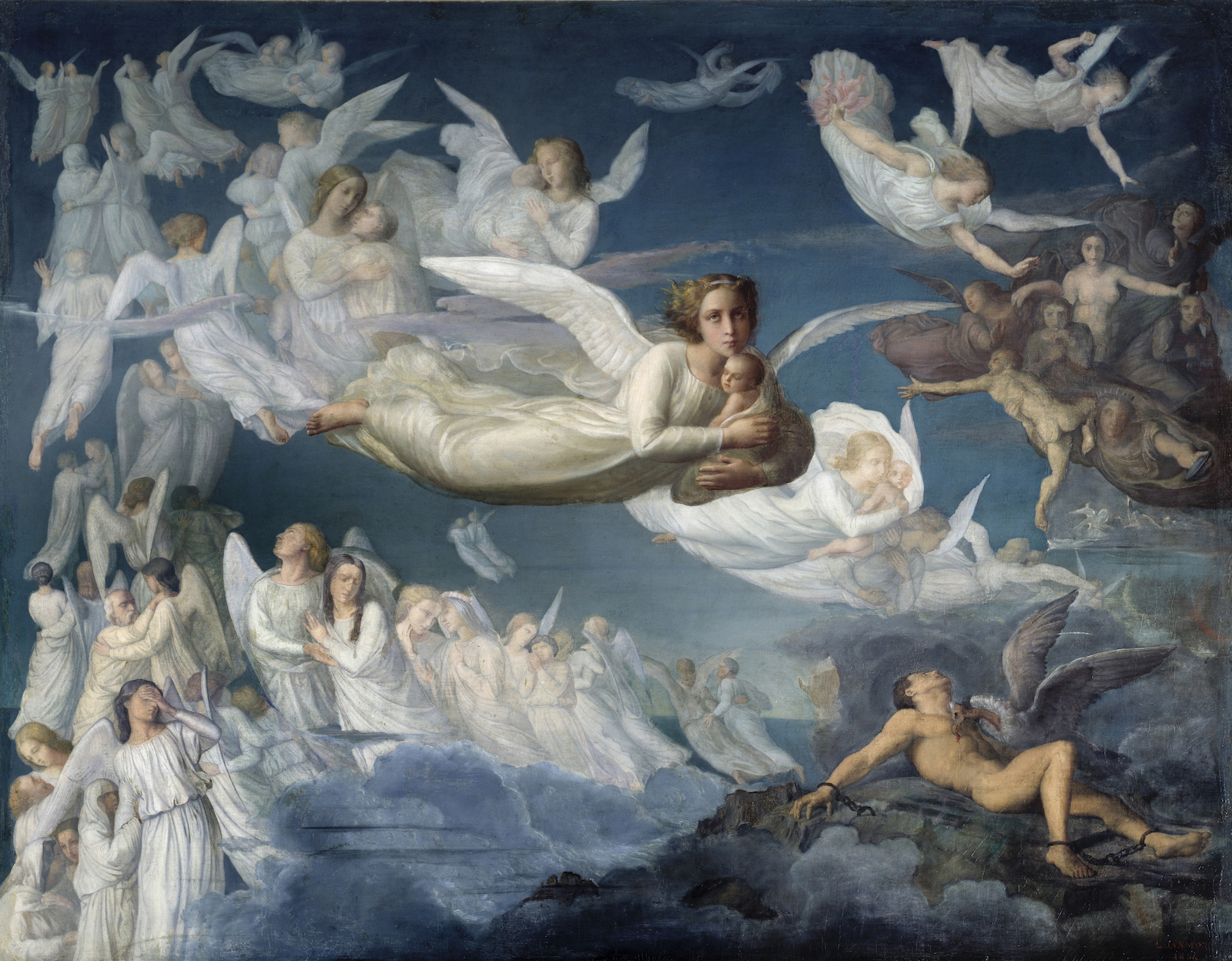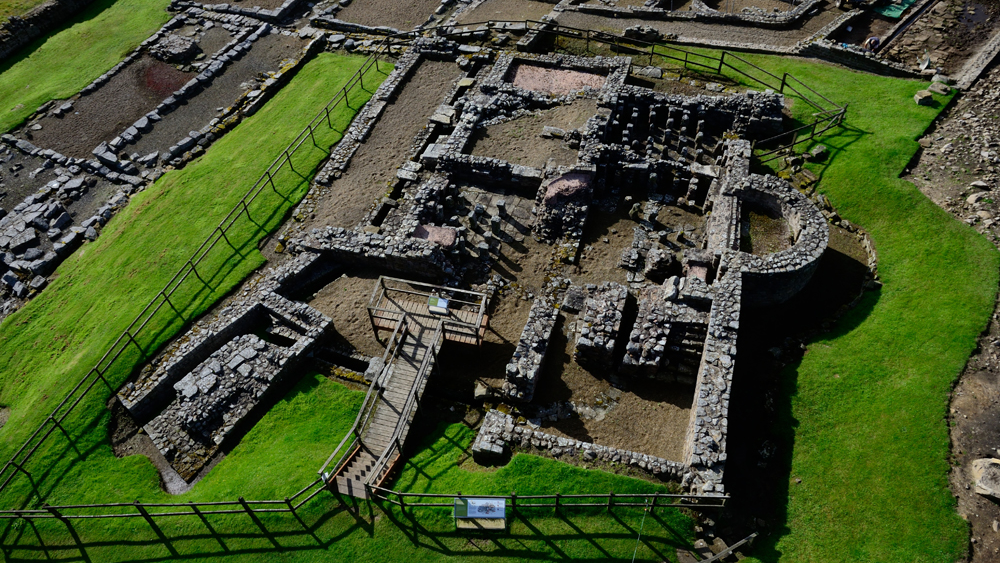Can science 'prove' there's an afterlife? Netflix documentary says yes.
The documentary emphasizes "proof" of life after death, but it mixes the debunked, the unknown and the unprovable.

Is there life after death? A new Netflix series claims to prove there is. But in doing so, the series relies on a confusing mishmash of fully debunked phenomena alongside matters of faith that aren't in the realm of science, as well as questions that science truly hasn't answered yet.
"Surviving Death" is based on a book of the same name by journalist Leslie Kean. It explores near-death experiences, mediums and séances, ghost-hunting and supposed past-life memories. While the show aims to present "proof" of all of these claims, it confuses its own narrative by offering the same credulity to outright scams as it does to outstanding questions about the process of death. It also treats matters of religious faith as something to prove or disprove. But most religious belief falls outside the realm of science, because it isn't something you can test.
"If you say, 'There's a God; [science] can't do anything with that, but at the moment, you say, 'Ah, but my God, when I pray to them, will move this glass across the table,' that's testable," said Richard Wiseman, a professor of the public understanding of psychology at the University of Hertfordshire in England.
Related: Spooky! The top 10 unexplained phenomena
Near-death experiences
"Surviving Death" marches through an array of paranormal phenomena. The first episode explores near-death experiences, to emotional effect. Interviewees describe harrowing tales of drowning, flatlining after allergic reactions and hemorrhaging in childbirth. All experienced sensations of consciousness during the experience, even though brain waves in the cerebral cortex stop within seconds of losing blood flow. People recalled meeting dead relatives, seeing bright lights or falling into a void of colors; some saw a tunnel, while others recalled seeing doctors trying to resuscitate them.
Near-death experiences have been studied, and there is some evidence that people may experience consciousness when doctors don't expect them to. However, this doesn't necessarily prove that the experiences are mystical in nature; it's also possible that brain activity and consciousness sometimes persist longer than expected after the heart stops. A 2018 study in the journal Frontiers in Psychology found that near-death experiences share a lot of features with how people feel after taking the psychedelic drug N,N-Dimethyltryptamine (DMT). DMT is produced naturally in the mammalian brain, and a 2019 study found that, in rats at least, DMT levels rose during cardiac arrest.
But studying the moment of death in humans is challenging, and no one has conclusively shown the mechanism behind near-death experiences. Dr. Sam Parnia, director of critical care and resuscitation research at New York University Langone Medical Center, surveyed survivors of cardiac arrest and found that of the 140 interviewees, 46% had a sense of being conscious during the event. Some had memories that appeared to have originated from the intensive care unit (ICU) after the person's heartbeat had been re-established. (Unlike in the movies, cardiac arrest patients are typically unconscious in the hospital for days or weeks after their resuscitation.) For instance, people who reported feeling that hostile beings were torturing them were probably undergoing a common hallucination that occurs when people are being brought out of sedation and having their breathing tubes removed.
Get the world’s most fascinating discoveries delivered straight to your inbox.
But 10% of the people in the study had what sounded like classic near-death experiences, and two recalled seeing or hearing their own resuscitations. One person had an actual verifiable memory — that person reported feeling he was hovering outside his body and accurately described events from his resuscitation, including the use of an automated external defibrillator (AED) and the presence of a bald medical professional who responded to a nurse's call for help. The findings were published in 2014 in the journal Resuscitation.
"They described full details of what is happening to them, and in one of those cases, we managed to confirm [the details], for the first time, as happening during a course of up to 5 minutes," Parnia told Live Science. This was surprising, as the cerebral cortex typically shuts down within 2 to 20 seconds of losing oxygen.
Parnia and his colleagues are now trying to explore this phenomenon in a systematic way. The data haven't been published yet, but the researchers have been bringing a computer into the rooms of patients in cardiac arrest to deliver audio and visual stimulation during resuscitation. The idea, Parnia said, is to test awareness by delivering a random word or set of words as a sort of "prime." If the person survives and regains consciousness, the researchers ask them to name a word in that category, to see if they're more likely than patients not shown a word to come up with the word that was shown as they were flatlining. The researchers are also monitoring the brain activity of patients during the resuscitation process.
In preliminary data presented at the 2019 American Heart Association Resuscitation Science Symposium, 165 patients were tested, 44 survived and 21 were interviewed. Of those 21, four reported memories, including feeling peace and joy, seeing relatives and hearing people in the room talking. No one remembered the visuals presented on the computer screen, but one person recalled the audio.
"What we've learned is that, yes, when we come close to death, we seem to have these transcendental and mystical — whatever you want to call it — experiences…. They're not consistent with delusions; they're not consistent with hallucinations," Parnia said. He said the findings suggest that consciousness may be more complex than experts thought.
"We need to study this objectively," he said.
Parnia was asked to participate in "Surviving Death," he said, but he turned the producers down because the show made no distinction between scientific research on topics such as the recalled experience of death and the pseudoscience of ghosts and mediums.
Regardless of the mechanisms behind near-death experiences, these events clearly can be meaningful. Many people who go through a near-death experience find it transformative. In "Surviving Death," the producers interview a man who flatlined after an allergic reaction to an anesthetic. He had a vision of seeing his deceased father, with whom he'd had a difficult relationship. His father embraced him, which brought the man a sense of enduring peace after the experience.
David Wilde, a psychologist and senior lecturer at Nottingham Trent University in England, has interviewed people who underwent near-death experiences and found that people often report this sort of transformation. One woman interviewed for a paper published by Wilde in 2010 reported that when her heart stopped, she felt that she was in a dark void where she reflected on everything bad she had ever done in her life before hearing a voice telling her not to be too hard on herself. Upon regaining consciousness, she felt she had a chance at a new beginning. She eventually became a counselor and interfaith minister, a path she said she would not have pursued if she hadn't had the near-death experience.
Seeking meaning
While near-death experiences can be subjected to the tools of science, many other sections of "Surviving Death" delve into the realm of faith, such as belief in reincarnation or the sense that you can feel the presence of a deceased loved one.
Other sections of "Surviving Death" delve into testable phenomena, such as physical manifestations during séances.
"That is the demarcation between religion, where you have primarily untestable claims, and the paranormal or parapsychology, where most of them are testable and most of them have been tested," Wiseman told Live Science."Surviving Death" often skims over these historical debunkings. For example, the documentary uncritically discusses Franek Kluski, a Polish medium who claimed to be able to manifest spirits that would dip their hands into wax molds and create hand molds that would have been impossible for the medium to make himself. In 1920, a French researcher conducted what he said were controlled experiments of Kluski's technique and could find no evidence that Kluski was faking. However, the documentary fails to mention the limitations of these experiments (such as the fact that Kluski was not searched before the séances) and fails to give credence to the testimony of magicians who demonstrated how they could make "spirit hands" with rubber gloves.
The documentary does acknowledge that mediums can glean information on their clients' loved ones from social media before readings, even taping a séance in which medium Nicole de Haas stuns a family with details about dead loved ones — information that the family later realizes was entirely available on Facebook or in online obituaries. However, the dash of skepticism quickly turns to sympathy for the mediums, with Kean saying that it is now more difficult than ever for mediums to work because "everything's out on the internet," and thus meaningful readings are harder.
Psychologically, people who visit mediums and psychics already want to believe, Wiseman said. Since the advent of infrared photography, most Victorian-style séances involving floating hands and moving tables have disappeared; these tricks were usually performed in darkness or near-darkness, and the methods that physical mediums used don't work so well when people can see them.
But there are still a few physical mediums, including de Haas. Beyond physical tricks that such mediums can use, Wiseman and his colleagues have found that the pure power of suggestibility can fool participants in séances into believing they've seen paranormal activity. He and his colleagues have done experiments in which they ran séances using objects painted with luminous paint. Wiseman had the participants sit around a table in a dark room and suggested that the objects were moving, even though they were stationary. After the experiment, around a third of the people reported that they'd seen the objects move, simply based on suggestion
Ultimately, "Surviving Death" tells a compelling tale of people's desire for meaning in the universe — and of their deep, unrelenting love for deceased family and friends. Science can never prove or disprove the existence of the afterlife, and the comfort that many families get from the belief in life after death is powerful. But astounding claims of inexplicable phenomena in this world should be approached with care, Wiseman said.
"It's buyer beware," he said. "There are books on skepticism out there; there are a lot of websites that will offer the alternative point of view. At least look at that, at least be informed, before you decide that something is definitely paranormal."
Originally published on Live Science.

Stephanie Pappas is a contributing writer for Live Science, covering topics ranging from geoscience to archaeology to the human brain and behavior. She was previously a senior writer for Live Science but is now a freelancer based in Denver, Colorado, and regularly contributes to Scientific American and The Monitor, the monthly magazine of the American Psychological Association. Stephanie received a bachelor's degree in psychology from the University of South Carolina and a graduate certificate in science communication from the University of California, Santa Cruz.


